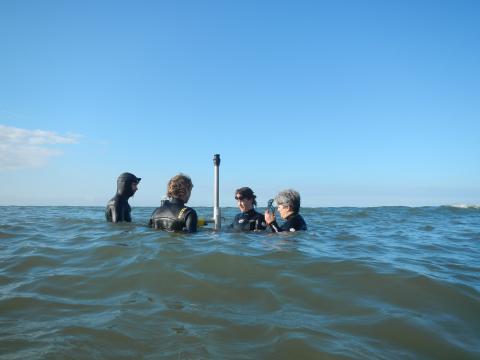Ripples and megaripples aggregate our coastlines, inlets, and rivers. The sediment flux associated with the growth and mobility of ripples and megaripples in our coastal areas is important to understanding changes in our beaches. We investigate the contribution of ripple migration and growth to the evolution of larger coastal morphology in current dominant, wave dominant, and combined wave-current dominant flows.
On the multi-ripple scale, bedforms are shown to have an adjustment time scale for growth or decay that is a function of the total kinetic energy in the flow. The relationship between the bedform volumetric growth or decay and the bedload sediment flux is modeled using a time varying sediment continuity analysis. Additionally, findings show that the bedload sediment transport associated with bedform migration is a function of the total kinetic energy in the flow field. The bedload sediment transport is shown to be robustly modeled using a modification of the energetics set of bedload transport equations regardless of whether the flow is current dominant, wave dominant, or combined wave-current flow, such that the structure for a combined roughness and bedload transport model is outlined supporting Qb = f(Ekwc). The unified model may be applicable to predicting large scale coastal change without dependence on a robust estimate of the bed shear stress.
Faculty Advisors: Diane Foster and Tom Lippmann
For more information: Meagan Wengrove
